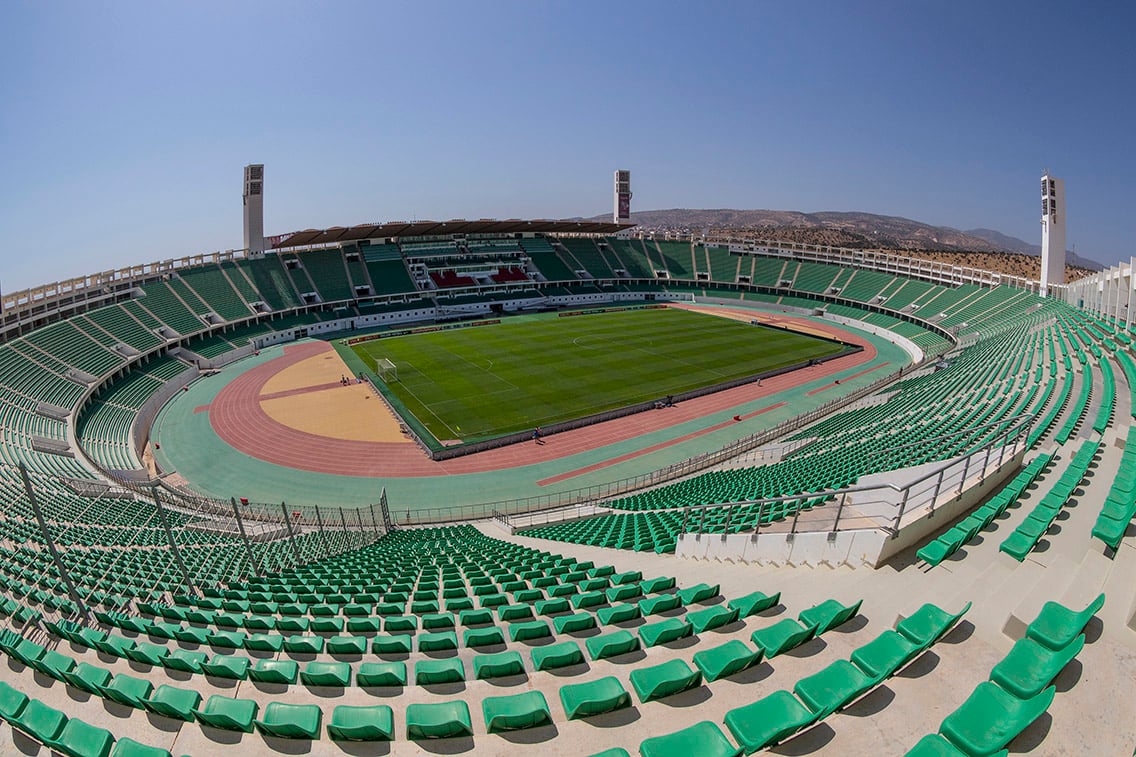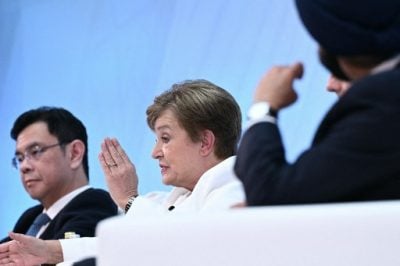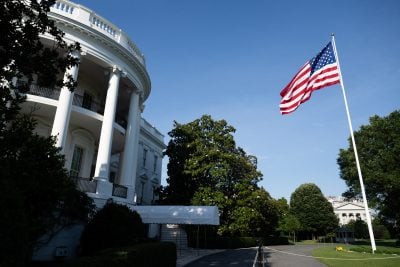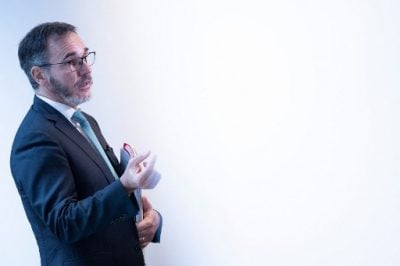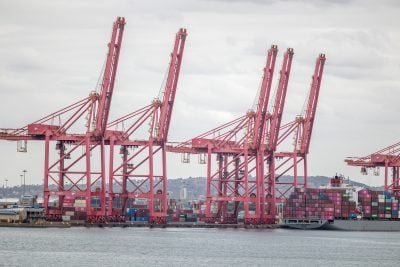The port city of Agadir is pushing forward with an ambitious urban development programme as it prepares to host tourists for two major global sporting events. The city’s Adrar stadium, which can seat 45,480, is undergoing extensive renovation in readiness for the Africa Cup of Nations (AFCON) in December. The stadium is also set to host matches during the 2030 FIFA World Cup – alongside five other stadiums in Casablanca, Marrakech, Tangier, Rabat and Fez.
The World Cup, which Morocco will co-host with Portugal and Spain, is expected to generate a substantial economic uplift, benefiting sectors such as infrastructure, tourism, transport, and retail. Some $5bn is expected to be spent in Morocco on infrastructure alone. Agadir – which is the administrative centre of Morocco’s Souss Massa region – is one of the Moroccan cities that are already undertaking massive infrastructure upgrades to deal with the influx of international visitors expected during the football competition. Besides the renovation of the Adrar stadium, new investments have been made in training facilities, transportation networks, and accommodation expansion.
“There are opportunities in tourism, and jobs are being created in construction, and many other sectors. The momentum is there,” Rachid Boukhenfer, vice president in charge of economic development at Souss Massa’s regional council, tells African Business. He argues that preparations for AFCON and the World Cup have spurred fresh investments from both the public and private sector. “The Agadir airport is among those in the kingdom slated for expansion to accommodate the expected surge in international visitors,” he says.
Boukhenfer singles out tourism as a particularly promising sector. “We are allocating significant resources to strengthen air connectivity and upgrade existing tourism infrastructure, especially hotels and related economic infrastructure.”
“We are diversifying our tourist attractions to enhance visitor experiences. This includes promoting niche activities like cultural tourism, water sports – especially surfing – golf, and services targeting digital nomads.”
Boukhenfer says that there are already signs that this strategy is producing “promising results,” pointing to the surge in international arrivals to the city. “The number of visitors is approaching 1.5m. Flight traffic at Agadir airport has also increased, reaching 453 flight movements on a weekly basis, with the British market leading, followed by the French and German markets,” he says.
Tourism remains the mainstay of Morocco’s economy. In 2024 the country recorded 17.4m tourist arrivals. This represents a 20% increase compared to 2023, and makes Morocco the most visited country in Africa. AFCON and the World Cup, Boukhenfer argues, will help sustain the sector’s heady growth.
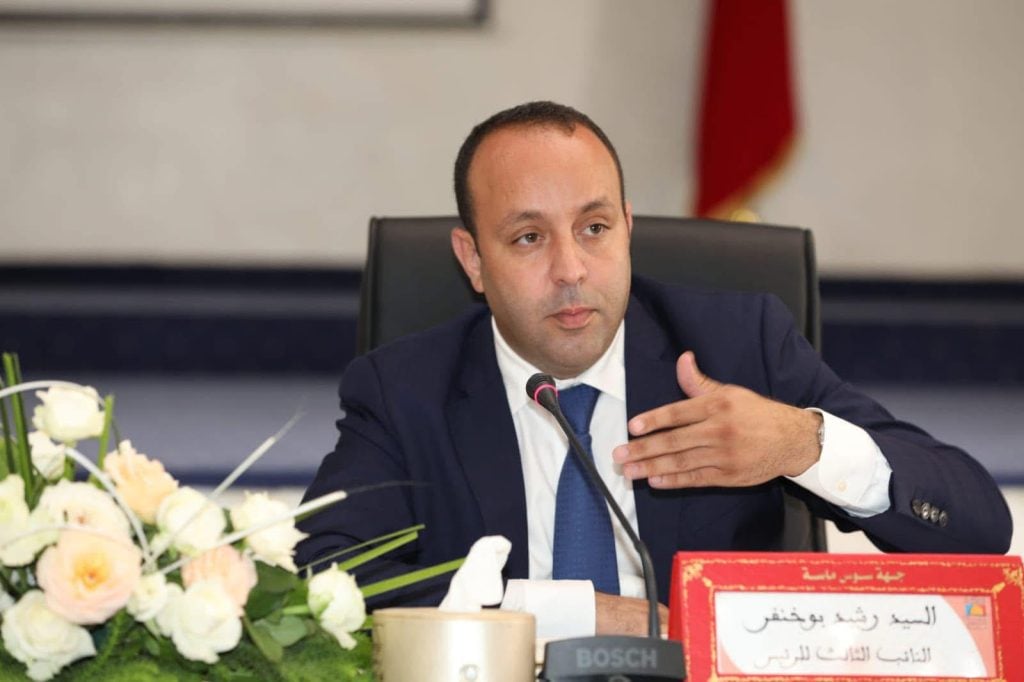
Big plans
Boukhenfer emphasises that, while hosting AFCON and the World Cup are significant milestones for Agadir and the Souss Massa region, they are only part of a broader vision to transform the city into a “modern, vibrant, and sustainable metropolis”.
“Our central location, linking northern and southern Morocco, is key and the region benefits from strong territorial connectivity,” he adds.
He recounts that the city’s current urban development programme was launched by King Mohammed VI in 2020.
“The royal urban development projects currently underway are transforming the region into a more liveable, dynamic, and competitive environment for citizens, tourists, and investors alike.”
The programme, he points out, targets urban renewal and focuses on strengthening infrastructure, enhancing mobility, improving living conditions, upgrading under-equipped neighbourhoods, promoting tourism, advancing sustainable agriculture, fostering industrial growth and boosting social amenities in education, health, and local commerce.
“It’s a comprehensive plan. In agriculture, we are investing in major infrastructure projects such as seawater desalination stations and “water highways” to connect key agricultural zones. These projects are designed to address the severe water scarcity that has affected the country in recent years, while also creating new irrigated areas to sustain and diversify agricultural production,” he says.
He notes that the region has also embarked on the development of new industrial hubs focused on the processing of agricultural and fishing products, with the goal of “increasing added value across these key sectors”.
He says that plans are under way to expand existing commercial port infrastructure and to boost the logistics sector, pointing to the planned development of an inland “dry port”. “The facility will help reduce congestion at seaports and bring essential port services closer to businesses located away from the coast.”
Skills and employment
Boukhenfer says that equipping young Moroccans with skills that can lead to quality jobs and higher incomes is a major focus for the regional council. Morocco had a relatively high unemployment rate of 8.9% in 2024, according to the World Bank.
“We have developed a comprehensive strategy that integrates three key components – entrepreneurship, employment, and vocational training,” Boukhenfer says. “We have created an environment conducive to entrepreneurship complete with incubators, accelerators, co-working spaces, and funding platforms. This has strengthened the broader entrepreneurial ecosystem by connecting established companies with startups and new business initiatives.”
He offers the example of the Souss Massa Innovation City, located within the Ibn Zohr University in Agadir. It provides facilities for startups and small and medium enterprises (SMEs), including a research and development (R&D) centre, incubation services and access to resources such as co-working spaces and training programmes.
Boukhenfer offers as another example the Agadir Technopark, which is funded through a public-private partnership and part of a broader Technopark Morocco network that has locations in Casablanca, Rabat, Tangier and other cities.
In a tour of the Technopark African Business encountered numerous young coders hard at work on projects ranging from delivery apps to education tools and supply chain solutions. Boukhenfer says that some of the coders and entrepreneurs had no prior skills or experience before they came to the centre.
He says that the training programmes give priority to young people from less privileged backgrounds. “The region is here to back them with the tools, funding, platforms, and partnerships needed to transform their vision into a sustainable and successful business.”
Discussing initiatives in vocational training, Boukhenfer says the region has invested in the development of new training institutions, most notably the Cité des Métiers et des Compétences, a vocational training centre that opened its doors to learners in 2022.
Sitting on 15 hectares in the Drarga area of Agadir, the vocational training centre provides innovative, industry-aligned education. “The facility has a capacity of 3,420 pedagogical places and features 11 specialised training hubs covering sectors like industry, tourism, agriculture, health, construction, digital technology, and more,” Boukhenfer says.
“The goal is to provide hands-on, immersive learning experiences that align training pathways with the needs of new investors and emerging sectors.”
Aim high
By 2046 the region aims to reach a GDP of 661bn Moroccan dirham ($72.6bn). The region expects this will be sustained by annual investment flows of 200bn dirham ($21.7bn), with 25% expected from foreign direct investment.
“Additionally, we are targeting 15% of Morocco’s large enterprises to be based in the region, the creation of 30,000 new businesses and cooperatives annually, and a female labour force participation rate exceeding 50%,” he concludes.
Want to continue reading? Subscribe today.
You've read all your free articles for this month! Subscribe now to enjoy full access to our content.
Digital Monthly
£8.00 / month
Receive full unlimited access to our articles, opinions, podcasts and more.
Digital Yearly
£70.00 / year
Our best value offer - save £26 and gain access to all of our digital content for an entire year!
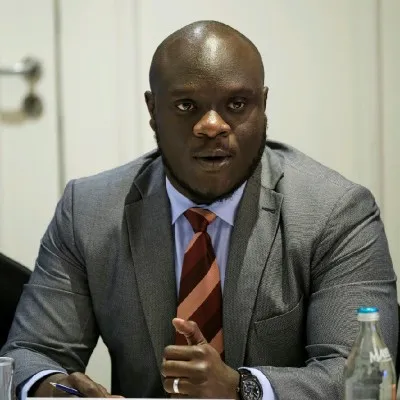
 Sign in with Google
Sign in with Google 